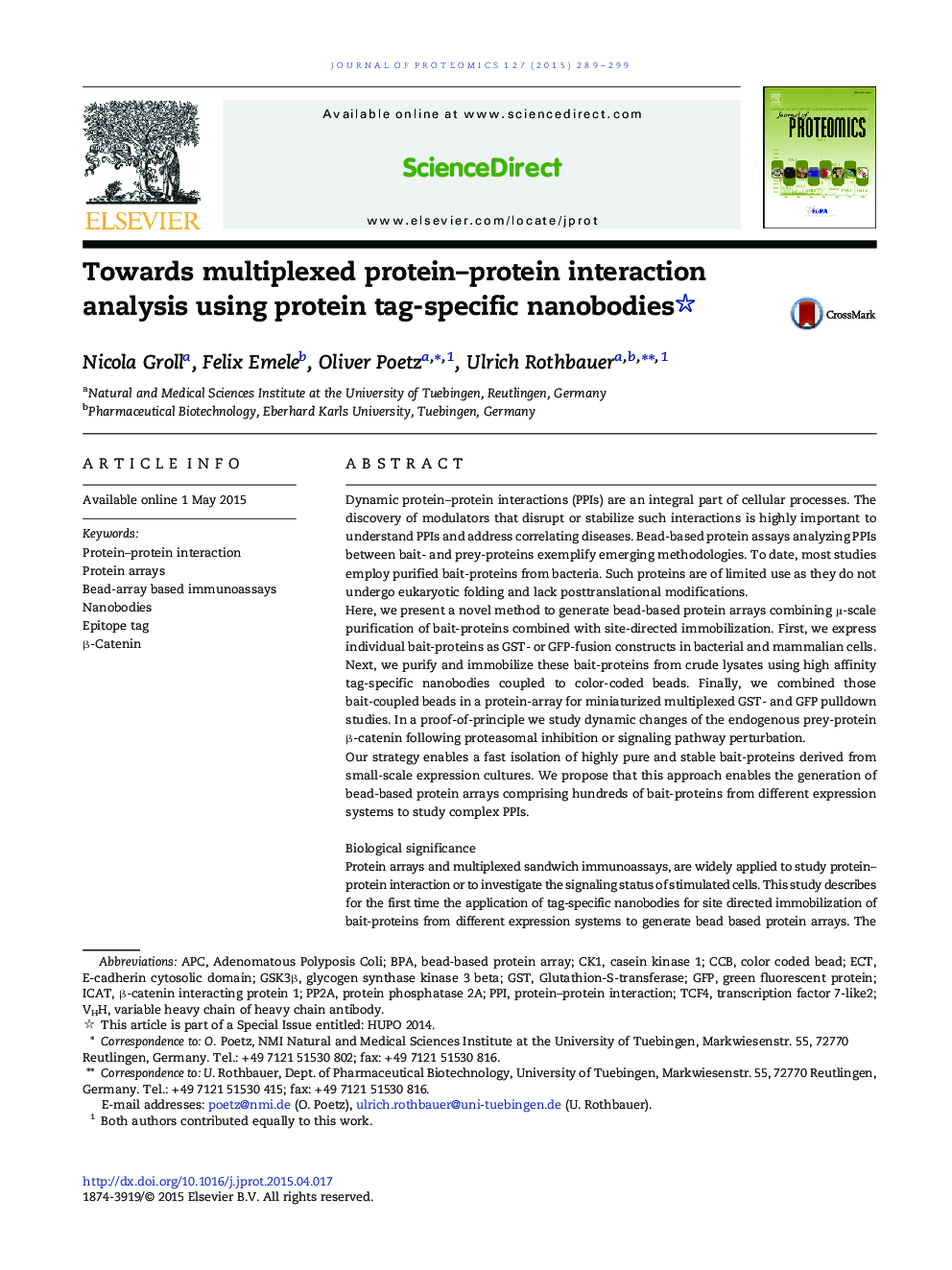| کد مقاله | کد نشریه | سال انتشار | مقاله انگلیسی | نسخه تمام متن |
|---|---|---|---|---|
| 1225443 | 968223 | 2015 | 11 صفحه PDF | دانلود رایگان |
• Application of GST- and GFP-specific nanobodies for functional bead-based protein array generation
• One step strategy for bead-based protein array generation from eukaryotic and procaryotic small-scale expression cultures
• The use of eukaryotic protein expression system improves protein functionality in protein–protein interaction studies.
• Hundreds of bait-proteins from different expression systems can now be used for array generation to study complex PPIs.
Dynamic protein–protein interactions (PPIs) are an integral part of cellular processes. The discovery of modulators that disrupt or stabilize such interactions is highly important to understand PPIs and address correlating diseases. Bead-based protein assays analyzing PPIs between bait- and prey-proteins exemplify emerging methodologies. To date, most studies employ purified bait-proteins from bacteria. Such proteins are of limited use as they do not undergo eukaryotic folding and lack posttranslational modifications.Here, we present a novel method to generate bead-based protein arrays combining μ-scale purification of bait-proteins combined with site-directed immobilization. First, we express individual bait-proteins as GST- or GFP-fusion constructs in bacterial and mammalian cells. Next, we purify and immobilize these bait-proteins from crude lysates using high affinity tag-specific nanobodies coupled to color-coded beads. Finally, we combined those bait-coupled beads in a protein-array for miniaturized multiplexed GST- and GFP pulldown studies. In a proof-of-principle we study dynamic changes of the endogenous prey-protein β-catenin following proteasomal inhibition or signaling pathway perturbation.Our strategy enables a fast isolation of highly pure and stable bait-proteins derived from small-scale expression cultures. We propose that this approach enables the generation of bead-based protein arrays comprising hundreds of bait-proteins from different expression systems to study complex PPIs.Biological significanceProtein arrays and multiplexed sandwich immunoassays, are widely applied to study protein–protein interaction or to investigate the signaling status of stimulated cells. This study describes for the first time the application of tag-specific nanobodies for site directed immobilization of bait-proteins from different expression systems to generate bead based protein arrays. The analysis of the Wnt-pathway activation by multiplexed μ-scale pulldowns demonstrated the advantages of eukaryotic expression systems regarding the stability and binding properties of individual bait proteins.This article is part of a Special Issue entitled: HUPO 2014.
Figure optionsDownload high-quality image (308 K)Download as PowerPoint slide
Journal: Journal of Proteomics - Volume 127, Part B, 8 September 2015, Pages 289–299
